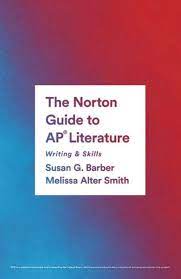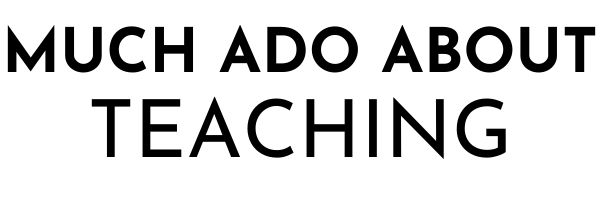I teach a course that ends with a big standardized exam at the end. The first few years I taught it, I used to do test prep by the book. I gave my students a sample exam each quarter. They had 42 minutes to complete 40 of the 55 multiple-choice questions and I counted the results as a test grade. As a class, we would review the questions the following day, sometimes in small-group breakdowns, sometimes as whole-class instruction. The two weeks before the exam we were in full-on, test-prep mode, drilling and killing. I thought I was preparing them for the rigors of the exam. I thought I was exposing them to college-level work. I thought this was a sound instructional practice.
But my scores did not budge.
The logical conclusion was that my students needed more preparation, not less. So that is what I did it. I gave them review packets with question stems and vocabulary words. I printed out SparkNotes summaries of the novels that we read, but that did not help either.
Then, I started making small tweaks to my testing philosophy even though it seemed counterintuitive. My scores rose. I made a few more tweaks and they soared.
In a three-year span I increased my students’ scores by 30%.
Here are the Four Counterintuitive Ways I Improved My Test Scores
1. To Prepare Students for the Test I Forget About the Test
Instead of testing my students with quarterly practice exams, I did not show them a single question until February. Exposing them early often crushed their confidence because they did not have the skills to succeed on such a demanding exam.
Now, I build skills from September to January, putting them in a position to be successful when they see their first sample question in February. They now arrive from a position of strength rather than one of weakness.
2. I Took Away All the Stress
Each quarter ended with a big practice exam right before grades were calculated and reports cards were sent home — talk about anxiety-inducing fear. So many of my students are grade conscious, and to have a big exam at the end of the quarter, one that tested if they were capable of doing college-level work as high-school students, created tension, fear, and disappointment.
Now I do Multiple-Choice Mondays in March. My students take 10-12 practice questions each Monday that don’t count for a grade. It is just practice, but practice with a purpose. I use Socrative to record the results, and I use those results as a measurement that informs my instruction. It is a win-win because they don’t have to sweat it and there are no tears, and I get the data I need to inform my instruction that week.
3. Everything Was Implied
I once thought that the best way to prepare students for the test was to directly instruct it. That is why we would review the questions, but instead of exposing my students to many of my students to new learning, many expressed that these review sessions felt like it exposed their failures.
Now, I employ implied instruction rather than direct instruction. I teach the same skills that appear on the exam, it just happens within the context of my normal teaching units, not a quarterly exam. This resulted from reviewing years of practice exams and identifying the key skills that are tested over and over again and developing ways to embed those skills within my regular instructional practice with the novels and poems that I teach.
4. I Joined In
When I gave quarterly exams or in-class essays I would always grade the period before while my current class was writing or taking the exam.
On an early podcast interview with Chris Lehman, author of Falling in Love with Close Reading: Lessons for Analyzing Texts, he urged all teachers to write along with their students. Doing so allows a teacher to experience what a student experiences. It is an act of teaching compassion, putting yourself in your students’ shoes and riding along for the struggle to write a thesis, develop topic sentences, and incorporate supporting details.
Now, with every essay I assign and with each Multiple-Choice Monday, I am right their with them writing along and answering close reading questions. It allows me to be more empathetic as a teacher. To a certain extent, I feel what they feel. I experience the frustration of getting a question wrong when the evidence was plainly in sight. I know what it is like to have an idea that needs to be articulated but struggle to find the words to express it. I can also express my thought process to them, modeling the way I work through a question.
Which counterintuitive approaches have you used to prepare your students for exams? Please share your ideas in the comments section below.













2 comments
Jean Melek
I agree with you completely and am doing mostly the same. I write with my students and sharing their frustration with timed writing is a great bonding experience. It’s so inauthentic. I know it’s their reality as an AP student, but no one writes like that in real life.
I never do the multiple choice with them, but I might try that on Mondays next semester too.
My teachers never really talked about the end of year tests other than to say “something like this might be on the Regents exam/AP exam.” I don’t remember ever doing the old kill and drill. I think less experienced teachers do the test prep route now because of the school/district/state emphasis on test scores. As you show, it really doesn’t do anything to move the needle. Thanks for the reminder.
(by the way- you have a typo in the first paragraph of number 3).
Leah Mullins
This is only my third year teaching AP Lit (and I actually don’t teach it until the spring semester), so I was super happy to learn I share some methods with someone like you, who has years and years of experience. I don’t give any tests. None. We read, we discuss, and we write. I have some collaborative review projects, such as a slideshow of literature devices that college students should know, and the kids team up, define these, find examples during the semester as we are reading, and then they provide some analysis and commentary. This isn’t due until the week before the AP Exam, and we talk about at least one of the devices every day in class. Sometimes, in the middle of reading something or analyzing it, a student will say, “Hey, who had [insert device here] because I think I just found a great example.” This slideshow came from the amazing Facebook group of AP Lit teachers, so I can’t claim original thought there. 🙂
At the beginning of the semester, we go over all the Big Ideas and question stems that go with those (again…this material was from the AP Lit Facebook group). Then, they team up and use children’s books to apply those Big Ideas. It is fun to watch them analyze children’s literature through the AP Lens…boy are there some aha moments. But, the purpose of that assignment is to remind them that the Big Ideas are really simple…and if they are reading a piece of complex literature, they can go back to thinking about how the Big Ideas applied to the easier texts, and that tends to get them unstuck.
We do the m/c practices on AP Classroom, and we talk about the passages and answers a bit after everyone is done. The kids also team up to do a Major Works Analysis of a text they have previously read in an English class, then the groups present these about a month before the exam. It is a great review of literature from their high-school careers as well as exam review. We usually do some thesis practice here too as we are reminded of all the great literature they have encountered.
In terms of writing, we start with analytical paragraphs using Timm’s thesis frame. I usually have to model this a few times and then remind them how to make a solid paragraph with quote sandwiches. The kids highlight the paragraphs before they turn them in to make sure that they have a claim that supports their over-arching thesis, and that they have at least two quotes with analysis and commentary. We do this together a couple times at first, sort of as a collaborative class effort. I have found that starting like that cuts down on my grading because the kids have a better understanding of what I’m looking for. As the semester goes on, I ask for more paragraphs, deeper analysis, etc., and by the time the test rolls around, the kids are like, “Oh, we just need our thesis and then paragraphs with quote sandwiches. We can do that!” Of course, we talk about each FRQ and the fact that quotes won’t be available for Q3. I’ve had great exam results for the past two years, so I’m going to keep doing what I’m doing and adding in other things as I learn more.
THANK YOU for writing these posts…I have learned so much from you and from Susan, and I get excited every time I see a new post from you two.